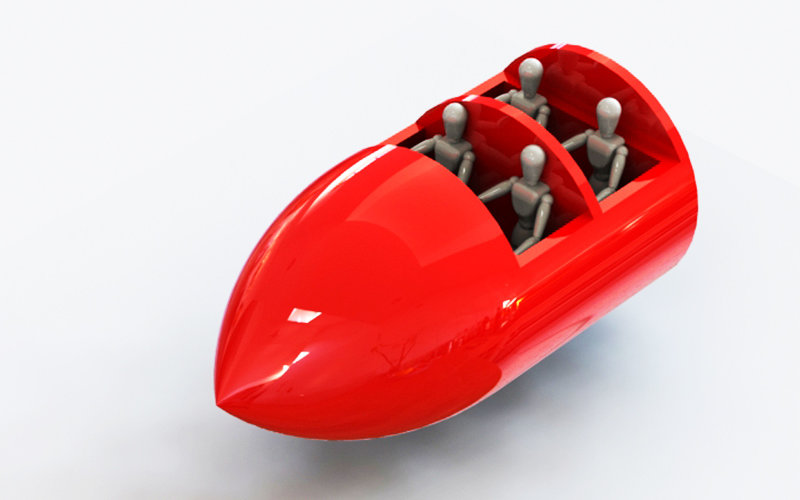
Buckle up, thrill-seekers. With unexpected tight turns, jaw-dropping dips and steep slopes estimated to last for about 20 seconds, a team of Cal State Fullerton mechanical engineering students designed an award-winning, nearly 100-foot high roller coaster for an international collegiate competition.
Undergraduates Patrick Babb, James Barnett and Mitchell Kitazumi designed the adrenaline-inducing thrill ride for the University Physics Competition, sponsored by the American Physical Society and the American Astronomical Society. The competition attracted more than 300 college teams from the United States, Canada, China, India, Mexico, Russia, as well as countries in Europe and South America.
The Titan team earned a silver medal for its design, ranking among the top 20% of competitors worldwide, according to the contest organizers. The team was recently notified of its win from the November competition. During a weekend in November, teams of up to three undergraduates from universities around the world had just 48 hours to solve one of two challenging, open-ended problems in applied physics and submit a formal report detailing their solution, said John Sanders, assistant professor of mechanical engineering, who helped prepare the team in the weeks leading up to the competition.
The team chose the roller coaster design and put physics and engineering principles into practice. The biggest challenge the students encountered was determining the exact features of the design, while sticking to the competition guidelines, Babb noted.
By writing a custom computer code, the students simulated the motion of the roller coaster along each segment of the track, accounting for gravity, friction and air resistance. The code helped to determine how long the ride would last and how much energy would be lost along the way, Sanders explained. The team also created a 3D computer rendering of a four-seat roller coaster cart, shaped like an aerodynamic aircraft nose.
“This work highlights the importance of accounting for air resistance and friction in roller coaster design,” noted Babb, who plans to pursue a career in aerospace engineering. “To simulate these effects, we utilized numerical analysis — the use of computation to solve complex mathematical problems.”
The students’ roller coaster design starts with a seven-story climb. Once at the top, the cart accelerates down a steep drop, before going over a hill, causing the passengers to feel weightless. Following this hill, a second drop causes the passengers to feel four times the force of gravity, Babb explained. Passengers then go through a twisting turn, where they experience a lateral G-force, followed by an unexpected drop.
“The focus of our project was to design a roller-coaster ride to be exciting, yet safe,” Babb said, adding that the team was careful to reference industry standards in creating the ride’s design.